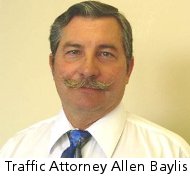 Appellate courts in California are becoming increasingly upset at the conduct of cities and photo enforcement vendors. On May 21, a three-judge panel of the California Superior Court, Appellate Division, in Orange County tossed out a red light camera citation in the city of Santa Ana in a way that calls into question the legitimacy of the way red light camera trials are conducted statewide. Previously, a string of brief, unpublished decisions struck at illegal contracts, insufficient notice and other deficiencies. This time, however, the appellate division produced a ten-page ruling and certified it for publication, setting a precedent that applies to the county's three million residents.
Appellate courts in California are becoming increasingly upset at the conduct of cities and photo enforcement vendors. On May 21, a three-judge panel of the California Superior Court, Appellate Division, in Orange County tossed out a red light camera citation in the city of Santa Ana in a way that calls into question the legitimacy of the way red light camera trials are conducted statewide. Previously, a string of brief, unpublished decisions struck at illegal contracts, insufficient notice and other deficiencies. This time, however, the appellate division produced a ten-page ruling and certified it for publication, setting a precedent that applies to the county's three million residents.
"This appeal involves an issue far too often presented to this court, namely the admissibility of evidence and the statutory compliance with the procedures employed by several municipalities in this county in what have come to be known as 'photo enforcement' citations," the unanimous ruling stated.
At trial, attorney R. Allen Baylis objected to the admission of the red light camera photographs because the city had failed to lay a proper foundation for the evidence. The court agreed.
"The photographs contain hearsay evidence concerning the matters depicted in the photograph including the date, time and other information," the ruling summarized. "The person who entered that relevant information into the camera-computer system did not testify. The person who entered that information was not subject to being cross-examined on the underlying source of that information. The person or persons who maintain the system did not testify. No one with personal knowledge testified about how often the system is maintained. No one with personal knowledge testified about how often the date and time are verified or corrected. The custodian of records for the company that contracts with the city to maintain, monitor, store and disperse these photographs did not testify. The person with direct knowledge of the workings of the camera-computer system did not testify."
Santa Ana Police Officer Alan Berg testified in the lower court case, but the appeals panel found his direct knowledge limited.
"This witness testified that sometime in the distant past, he attended a training session where he was instructed on the overall working of the system at the time of the training," the ruling stated. "Here the officer could not establish the time in question, the method of retrieval of the photographs or that any of the photographs or the videotape was a reasonable representation of what it is alleged to portray.... Here, Officer Berg did not qualify as the appropriate witness and did not have the necessary knowledge of underlying workings, maintenance or record keeping of Redflex Traffic System. The foundation for the introduction of the photographs and the underlying workings of the Redflex Traffic System was outside the personal knowledge of Officer Berg."
Lawyers for the city of Santa Ana argued that the evidence should be admitted under the hearsay exemption for official government records. The court rejected this argument because the photographic records were created by a for-profit Australian company, not a state or local government agency.
"Here, the signator of the document, Exhibit #3, states they are employees of the 'Redflex Traffic Systems,'" the ruling stated. "At no point does the signatory state that 'Redflex Traffic Systems' is a public entity or that they are otherwise employed by a public entity. Absent this critical foundation information, the document that they created cannot be and is not an 'official record' under Evidence Code section 1280."
With the evidence inadmissible, the appellate panel found that "there is a total lack of evidence to support the vehicle code violation in question." All charges were dismissed.































No comments:
Post a Comment